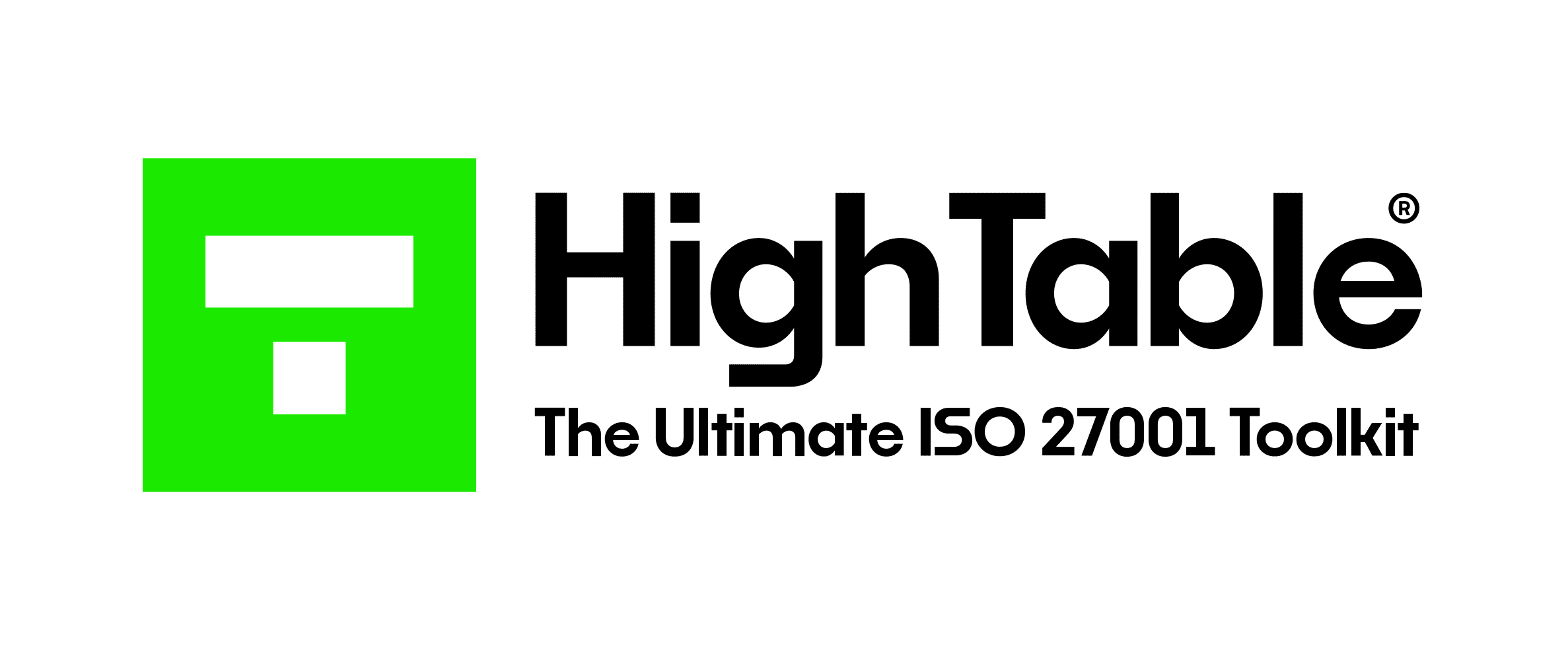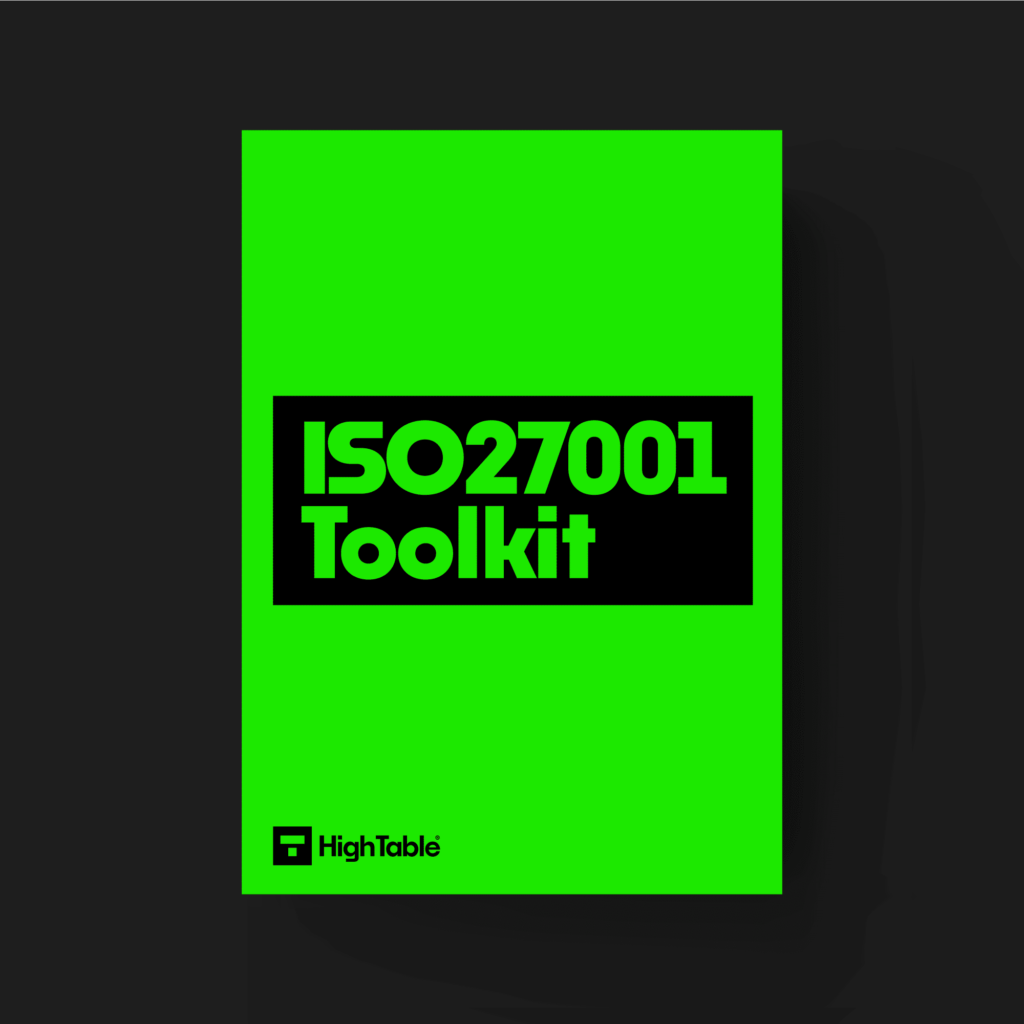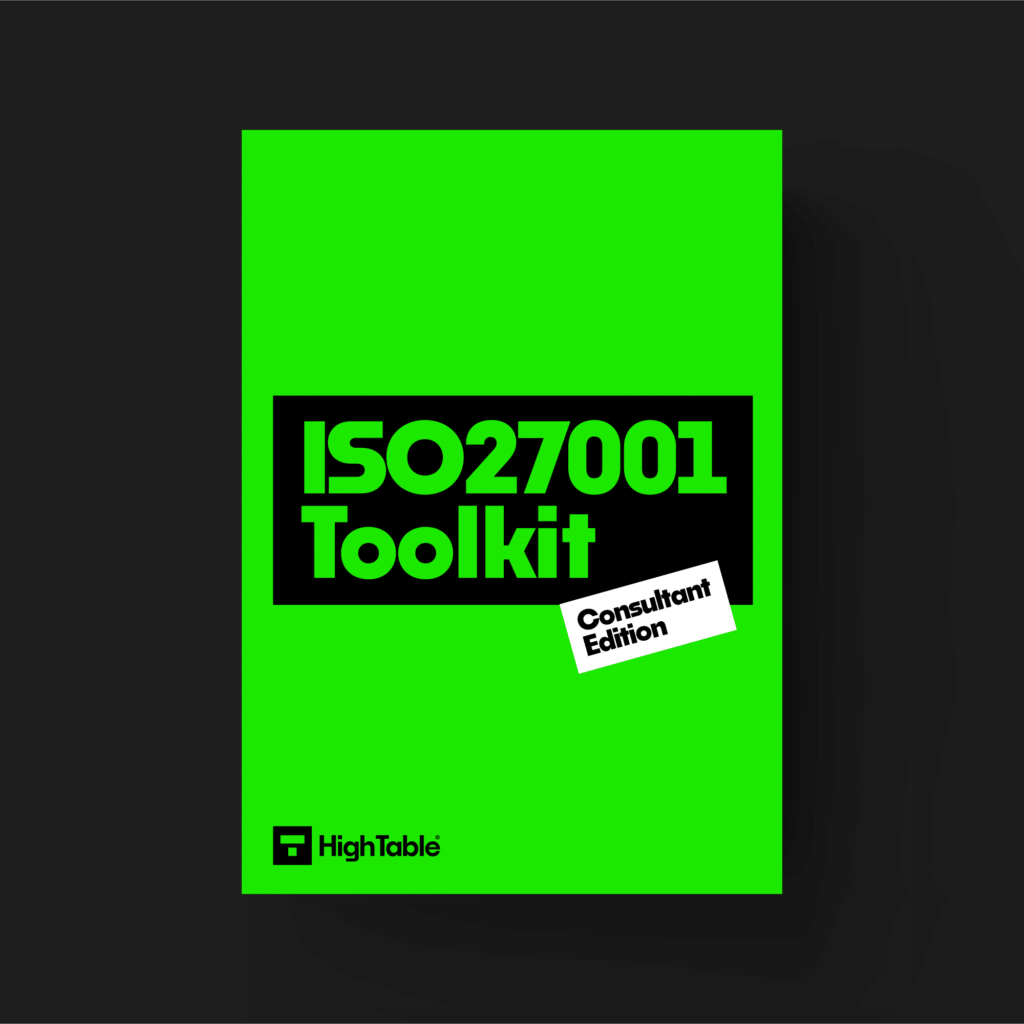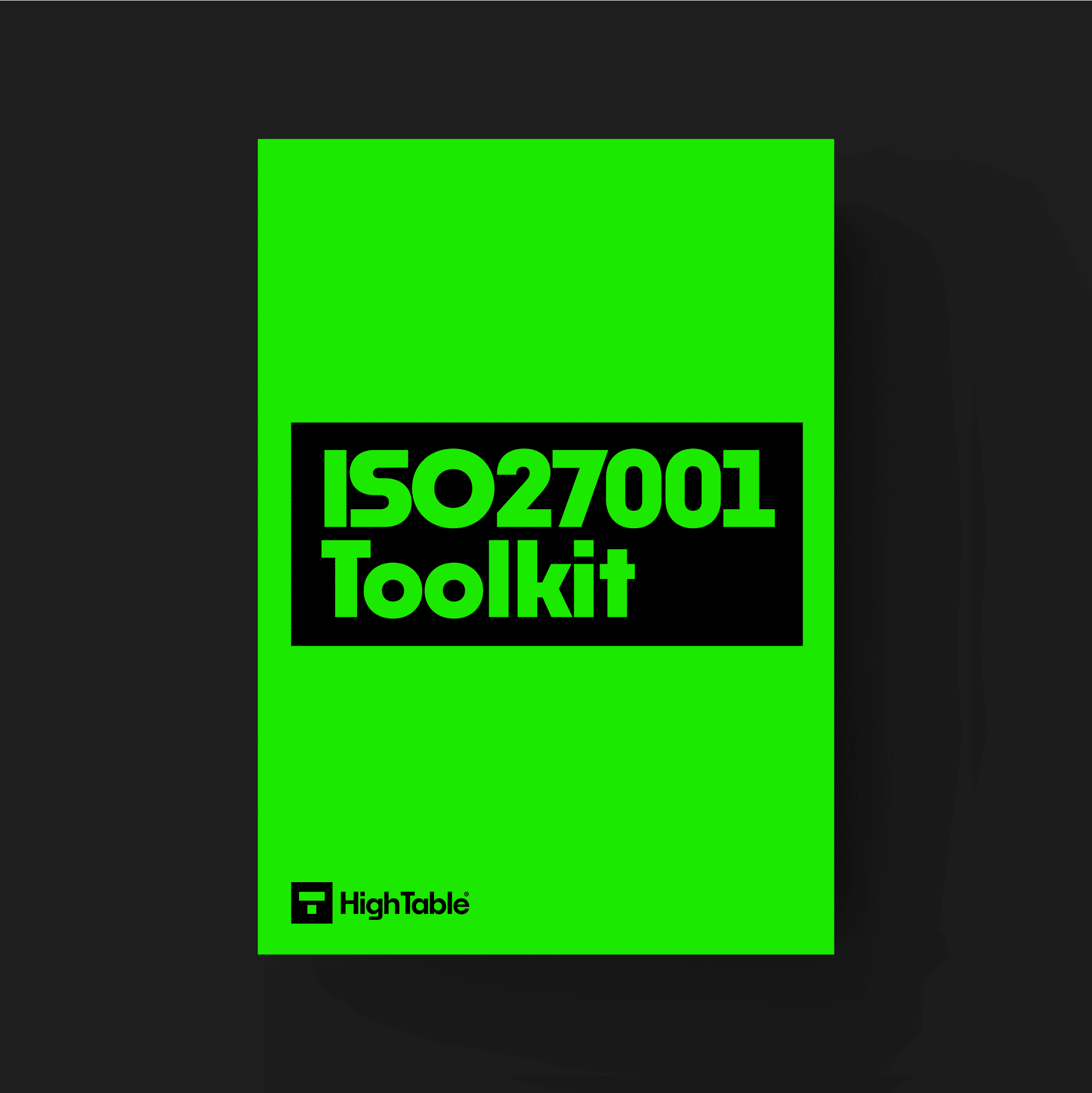The ISO 27001 Information Classification and Handling policy sets out the rules for categorising information and handling it based on that categorisation.
Table of contents
- What is it?
- Applicability to Small Businesses, Tech Startups, and AI Companies
- ISO 27001 Information Classification and Handling Policy Template
- Why you need it
- When you need it
- Who needs it?
- Where you need it
- How to write it
- How to implement it
- Examples of using it for small businesses
- Examples of using it for tech startups
- Examples of using it for AI companies
- How the ISO 27001 toolkit can help
- Information security standards that need it
- List of relevant ISO 27001:2022 controls
- ISO 27001 Information Classification and Handling Policy FAQ
What is it?
Think of an ISO 27001 Information Classification and Handling Policy as a simple rulebook. It’s a set of guidelines that tells you and your team how to protect your company’s information. It helps you figure out what information is important, like customer data or trade secrets, and how to handle it safely. This policy makes sure that everyone knows the right way to use, store, and share information so it doesn’t get lost, stolen, or misused.
Applicability to Small Businesses, Tech Startups, and AI Companies
This policy is useful for businesses of all sizes, including small businesses, tech startups, and AI companies.
- Small Businesses: You might think a small business doesn’t need this, but you do! It helps you protect things like your customer lists and financial records, keeping your business running smoothly and building trust with your clients.
- Tech Startups: For you, it’s all about protecting your cool ideas and new technology. This policy keeps your intellectual property and customer data safe, which is key for your growth and success.
- AI Companies: You deal with tons of data, so this policy is a lifesaver. It helps you manage and protect the data you use to train your AI models, ensuring your technology is both secure and ethical.
ISO 27001 Information Classification and Handling Policy Template
The ISO 27001:2022 Information Classification and Handling Policy Template is designed to fast track your implementation and give you an exclusive, industry best practice policy template that is pre written and ready to go. It is included in the ISO 27001 toolkit.
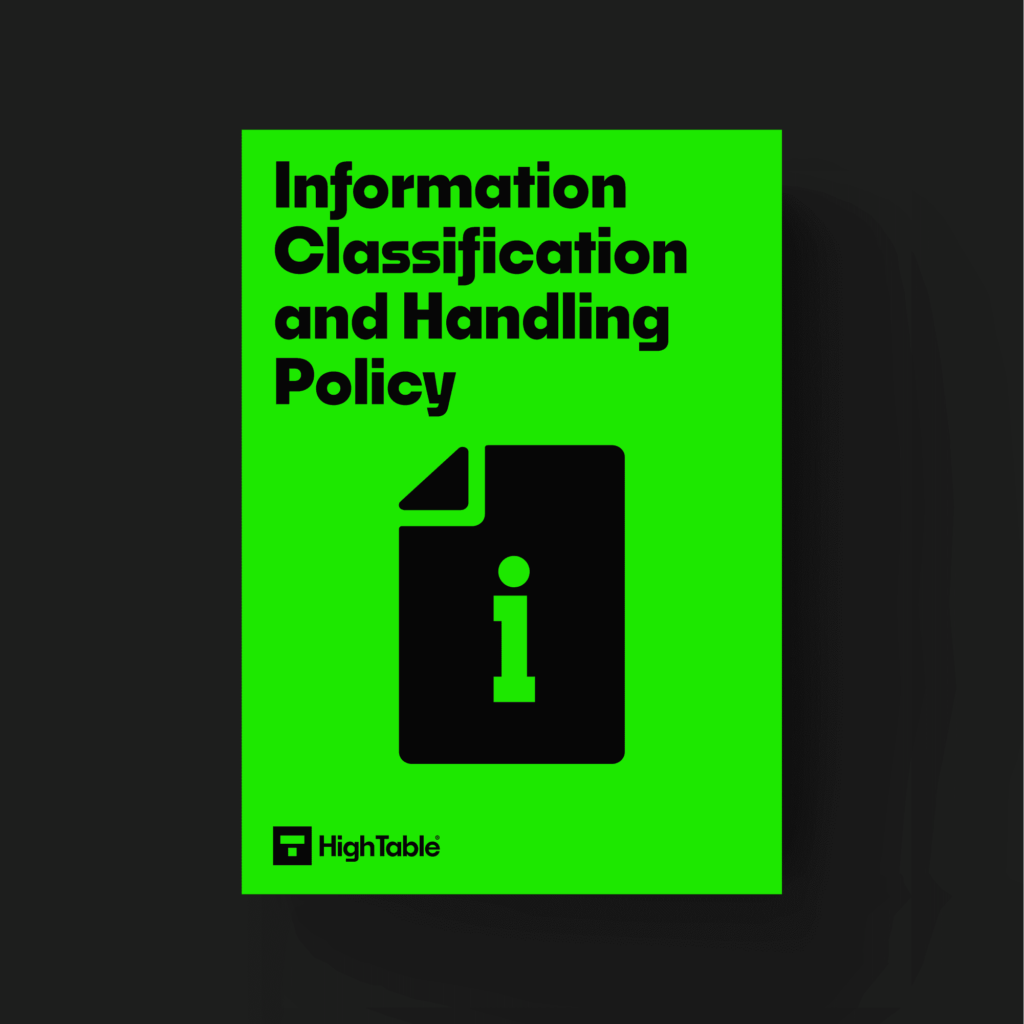
Why you need it
You need this policy to keep your company’s information safe. It helps you avoid things like data breaches, which can be expensive and hurt your reputation. Having this policy also shows your customers and partners that you take information security seriously, which can help you win new business. Plus, it’s a key part of getting and keeping your ISO 27001 certification.
When you need it
You should create this policy as soon as your business starts handling any kind of sensitive information. The sooner you have it, the better. It’s a good idea to have it in place before you go for your ISO 27001 certification, but even if you’re not planning on getting certified right away, it’s smart to have this policy ready to go.
Who needs it?
Everyone in your company needs to know about this policy. From the CEO to the newest intern, everyone plays a part in keeping information secure. You need to make sure everyone understands their role and follows the rules.
Where you need it
You need this policy everywhere you handle information. That means in your office, on your company computers, and even on your personal devices if you use them for work. It’s a company-wide rule that applies no matter where you are.
How to write it
Start by thinking about all the different types of information your company handles. Then, decide how important each type is. For example, your customer’s social security numbers are probably more important than a public press release. Once you’ve ranked your information, you can write the rules for how to handle each type. Keep the language simple and easy to understand.
How to implement it
First, make sure everyone reads and understands the policy. You can do this by holding a short training session or sending out a simple email. Then, you need to make sure you have the right tools in place. This might include things like password managers or secure file-sharing systems. Finally, you need to check in regularly to make sure everyone is still following the rules.
Examples of using it for small businesses
Let’s say you’re a small online store. Your policy would say that you must protect your customer’s credit card information. This means you would use a secure payment system and not save any card numbers on your computer. It would also say that you need to lock your computer when you leave your desk so no one can see your customer list.
Examples of using it for tech startups
If you’re a tech startup creating a new app, your policy would say that your app’s source code is super secret. It would say that only certain people can see it and that you can’t share it with anyone outside the company. It would also say that you need to use strong passwords on all your work accounts to keep your ideas safe.
Examples of using it for AI companies
As an AI company, your policy would say that the data you use to train your AI is very important. It would say that this data must be kept in a secure place and that you can’t use it for anything other than training your AI. This helps protect the privacy of the people in the data.
How the ISO 27001 toolkit can help
An ISO 27001 toolkit is like a shortcut. It gives you a bunch of pre-written documents, like policies and forms, that are already set up to meet the ISO 27001 standards. This saves you a lot of time and makes it easier to get your policy in place quickly.

Information security standards that need it
This policy is a key part of ISO 27001, which is an international standard for managing information security. Other standards that need it include:
- CCPA (California Consumer Privacy Act)
- DORA (Digital Operational Resilience Act)
- NIS2 (Network and Information Security (NIS) Directive)
- SOC 2 (Service Organisation Control 2)
- NIST (National Institute of Standards and Technology)
- HIPAA (Health Insurance Portability and Accountability Act)
- GDPR (General Data Protection Regulation)
List of relevant ISO 27001:2022 controls
The ISO 27001:2022 standard has specific controls that relate to secure development. Some of the most important ones include:
- ISO27001:2022 Annex A Control 5.12 Classification Of Information
- ISO 27001:2022 Annex A 5.13 Labelling Of Information
- ISO 27001:2022 Clause 7.5.1 Documented Information
- ISO 27001:2022 Clause 7.5.2 Creating and Updating Documented Information
- ISO 27001:2022 Clause 7.5.3 Control of Documented Information
- ISO 27001:2022 Annex A 5.37 Documented Operating Procedures
- ISO 27001:2022 Annex A 5.33 Protection Of Records
- ISO 27001:2022 Annex A 8.24 Use of Cryptography
- ISO 27001:2022 Annex A 8.10 Information Deletion
ISO 27001 Information Classification and Handling Policy FAQ
A information and classification handling policy is a simple policy that sets out the levels of data classification and what you can and cannot do with the information of those types.
There as many levels of classification as are appropriate for the business. It is our recommendation to keep it simple and in most cases we would advise 3 levels of data classification being Confidential, Internal and Public.
The 3 levels of information classification that are the most common are Confidential, Internal and Public.
You can download a trusted Information Classification Handling Policy template from High Table: The ISO 27001 Company.
Yes. You need an information classification and handling policy for ISO 27001.
The Information Classification and Handling Scheme provides guidance on the classification of information and the different levels of security required.
Information classification in ISO 27001 is the process of assessing data for its importance and sensitivity and assigning the level of protection that data should be given.
Data is assigned owners, called Data Owners, and it is the Data Owners that decide the data classification.
A data owner is the person that is responsible for the data. All data is assigned and owner.
A data owner decides on the data classification, the data retention, the level of protection, the data controls and is responsible for approving access to the data.
Yes, data classification is required for GDPR.
Yes, data classification is required for data protection.
The main benefit of data classification is that it allows us to protect the data that is most important to us by prioritising our resources and control efforts.
